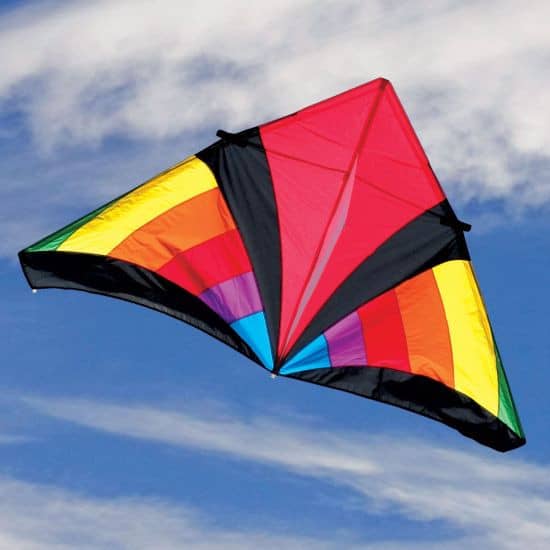Sky-High Fun: The Ultimate Guide to Delta Kites for Parents
Hello there, lovely parents! Are you looking for a delightful outdoor activity that’ll bring huge smiles to your little ones’ faces? Well, look no further because delta kites are here to turn any regular afternoon into an extraordinary adventure. In this ultimate guide, we’re going to uncover all the ins and outs of delta kites, so you can create unforgettable memories with your kiddos under the open sky!
What’s So Special About Delta Kites?
Delta kites are the superheroes of the kite world, known for their triangular shape that resembles the Greek letter Delta (?). What makes them a parent’s best friend, you ask? They’re incredibly user-friendly and stable in flight, plus they don’t require a PhD in Kite Flying to get them soaring. That’s right; these winged wonders are ideal for kids and kite newbie parents alike!
Choosing the Right Delta Kite for Your Family
Before you dash off to make those skies a tad more colorful, let’s chat about picking the perfect delta kite for your family. There are a couple of factors to consider:
- Size Matters: Delta kites come in various sizes, from petite wonders to mammoth flyers. Smaller sizes are great for younger children, while larger ones can be exciting for older kids and adults. Remember, the bigger the kite, the more wind it can harness, but also the more strength it’ll require to control.
- Material Magic: Look for kites made from durable materials like ripstop nylon or polyester, which can stand up to those occasional crash landings. The frame is usually made of fiberglass or carbon, which provides both strength and flexibility.
- Design Delights: Delta kites could be plain Jane or Picasso in the sky. They come adorned with all sorts of colors and patterns, and some even have tails or streamers for added stability and pizzazz. Let your child’s personality shine by choosing a design that they’ll love to chase across the blue canvas!
Setting Up Your Delta Kite
Now, the part you’ve probably been waiting for – getting your delta kite airborne! But before we sprint towards the gusts of wind, setting up your kite properly is a key step you wouldn’t want to skip:
- Gather Your Gear: Unpack your delta kite, and make sure all parts are present and accounted for. You should have the sail (that’s the fabric part), the spars (these are the rods that give the kite its structure), the bridle (the string that attaches to the sail), and of course, the kite line.
- Assemble With Awe: Slide the spars through the channels in the sail to form the kite’s framework. Most delta kites come with easy-to-follow instructions, making this step a breeze.
- Bridge the Bridle: Attach the bridle to the designated points on the kite. This step is crucial for the kite’s balance, so take your time to get it just right.
- Line Up for Liftoff: It’s time to attach your line! Secure it to the bridle loop, and your kite is prepped and almost ready to kiss the sky.
With your kite assembled, you’re almost ready to paint the sky with your family’s new lexicon of laughter. But we’re not done yet! In the next part of our guide, we’ll dive into the best techniques to launch and fly your delta kite like a pro, what safety measures to consider, and how to embrace the full joy of kite flying with your children. Join us as we unravel the thread to a world where joy and breezes meet!
So grab your sun hats and sunscreen, and let’s make those kites swoop, swirl, and soar! Stay tuned for more helpful hints on turning a simple day at the park into a family kite-flying extravaganza!

5 Things Parents Should Know in Preparing for Delta Kite Flying
1. Check the Weather Conditions
Before heading out, it’s essential to check the weather. Ideal conditions for delta kite flying include a steady, moderate breeze of about 5 to 25 mph. Avoid very strong winds, which can make flying difficult and potentially dangerous, especially for kids. Also, steer clear of rain and thunderstorms, as wet kites are harder to fly and lightning poses a serious risk.
2. Choose an Open Space
Delta kites need plenty of room to maneuver. A wide-open space, such as a beach or an open park area free from trees, power lines, and buildings, will ensure a safe and enjoyable experience. This reduces the likelihood of entanglements and collisions, and also makes it easier to keep an eye on your children as they play.
3. Dress for the Occasion
Kite flying is an outdoor activity, and dressing appropriately is key. Depending on the weather, make sure you and your kids have sun protection, such as hats and sunscreen, or warm clothing if it’s a bit chilly. Comfortable shoes are a must, as you’ll likely be doing a fair bit of walking and running.
4. Practice Safety
Kite flying is fun, but safety should always come first. Never fly kites near roads or airports. Establish clear rules with your children about where they can run and how to handle the kite line to avoid cuts or burns. If multiple kites are in the air, teach kids about right-of-way to prevent collisions.
5. Prepare for Take-Off and Landing
Teaching kids about proper take-off and landing techniques ensures that kite flying is stress-free for everyone. Practice lifting the kite into the wind and controlling its descent during landing. Show your children how to let out and reel in the line smoothly to keep the kite’s flight stable and enjoyable.
Remember, preparation is the key to a successful and memorable kite-flying day. By knowing what to expect and having a plan in place, you and your little ones are sure to have an amazing time with your delta kites. Keep these tips in mind, and you’re well on your way to becoming kite-flying aficionados!
Happy flying, and may your family’s spirits soar as high as your kites!
See more great Things to Do with Kids in New Zealand here. For more information see here
Disclaimer
The articles available via our website provide general information only and we strongly urge readers to exercise caution and conduct their own thorough research and fact-checking. The information presented should not be taken as absolute truth, and, to the maximum extent permitted by law, we will not be held liable for any inaccuracies or errors in the content. It is essential for individuals to independently verify and validate the information before making any decisions or taking any actions based on the articles.




